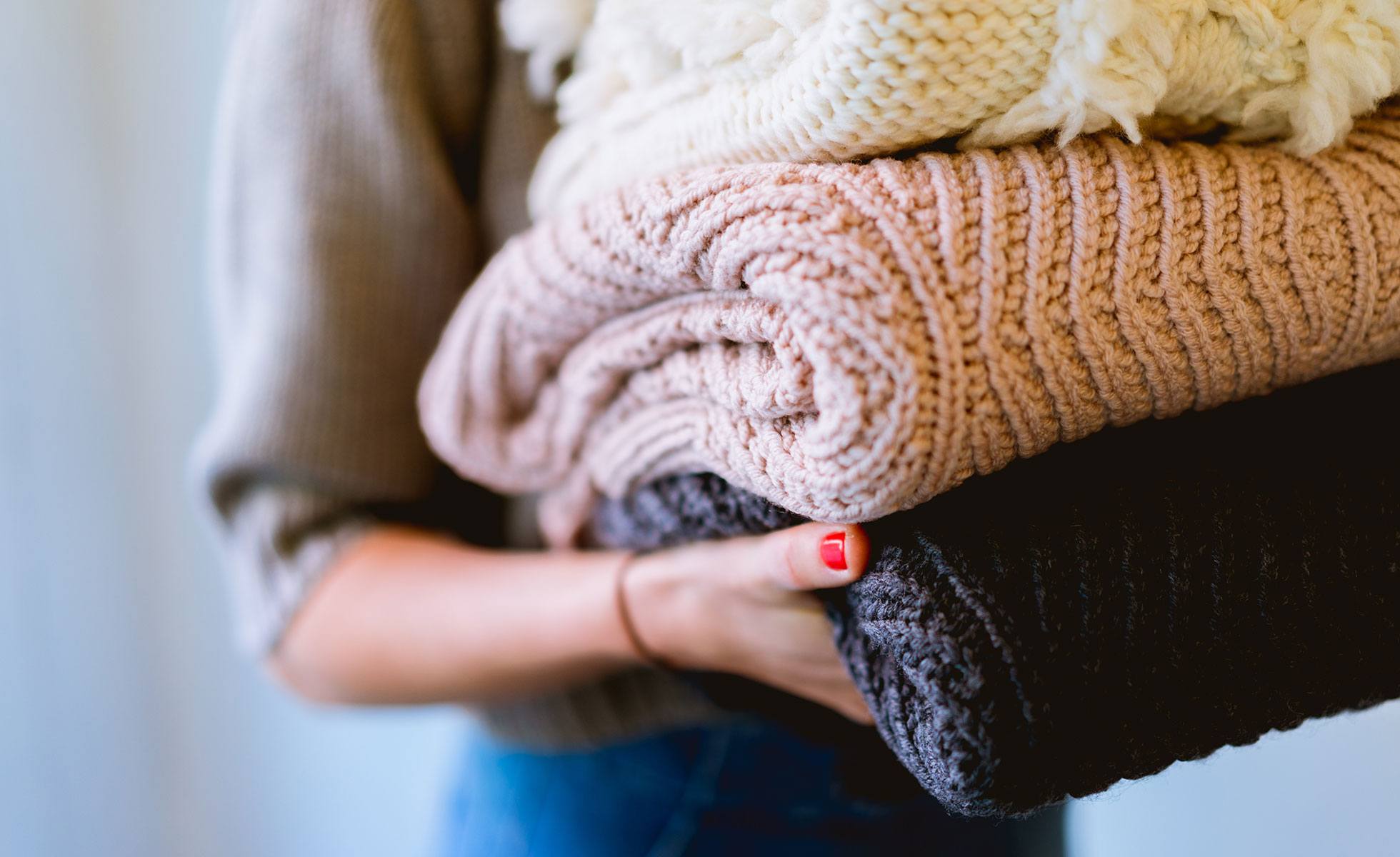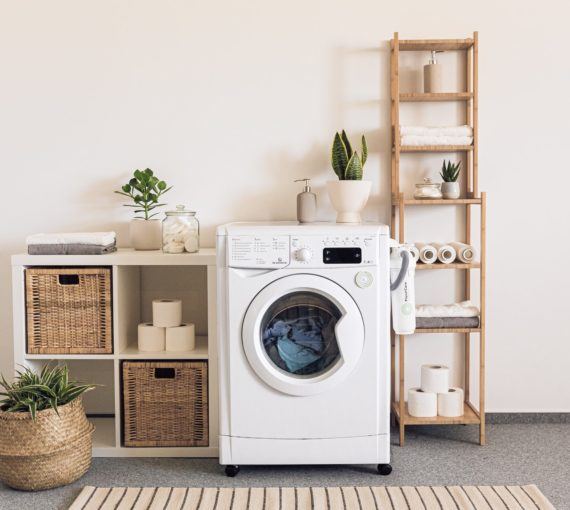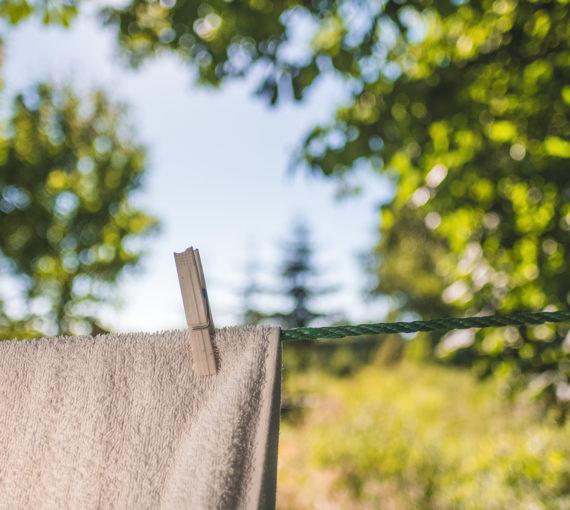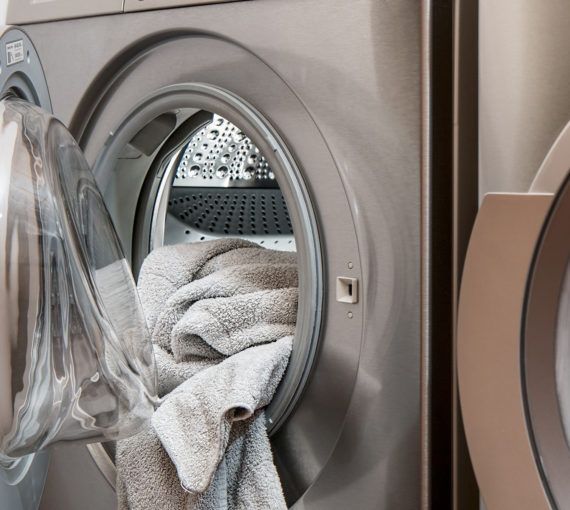
Take care of all your fabrics so they last longer and pollute less. (Photo: Dan Gold via Unsplash)
It’s never too late to break old fabric habits, from what you buy to how you care and store stuff. Even a few small changes can greatly reduce your carbon emissions and exposure to toxic chemicals — even save you money.
Avoid formaldehyde in fabrics
What’s colourless, preserves frogs, coats pillow cases and impregnates “no-iron” shirts?
Answer: formaldehyde.
Formaldehyde is used in clothing, bedding and curtains because it…
- Prevents wrinkles.
- Prevents mildew during shipping.
- Increases colour fastness.
- Increases stain resistance.
Why the concern?
- The International Agency for Research on Cancer says formaldehyde is a human carcinogen. Canada has also declared it toxic. The U.S. doesn’t regulate its use in clothing.
- You won’t find it listed on the label.
- Even low-level exposure can cause headache, runny nose or contact dermatitis (a.k.a. skin irritation/rash).
Formaldehyde is particularly troublesome for those with chemical sensitivities, which may explain why you’re still suffering from rashes or eczema even after switching to less-toxic laundry soap and ditching fragranced dryer sheets.
FOUR WAYS TO REDUCE YOUR EXPOSURE TO TOXIC CHEMICALS
Wash
Wash all clothes and linens BEFORE wearing or using — gets rid of about 60 per cent of the stuff.
Avoid
Avoid products labelled “wrinkle-free,” “iron-free,” “non-iron,” “permanent press” or “stain-resistant.”
Smell
Perform a “sniff test” — if it smells chemical-y, don’t buy it (or return it if you already have).
Choose
Look for sustainable fabrics such certified organic or recycled cotton, linen, hemp or wool.

DIY laundry soap recipes
Detergents and soaps are not the same. Avoid synthetic and toxic chemicals in common laundry detergents and make your own laundry soap using these DIY recipes!

Switch from dry cleaning to wet cleaning
Dry cleaning dirties the planet. Find a professional wet cleaner near you!
Wet cleaning uses environmentally friendly, 100 per cent biodegradable soaps and conditioners to remove tough stains and treat “dry clean only” items without harmful solvents. State-of-the-art machines allow for flexibility and precision in water temperature, agitation and amount of detergent — the best options for stain removal and fabric care.
Gentle detergents, a process that measures the humidity during the drying process and finishing machines for pressing mean less stress on garments, reduced energy and water use, and no toxic ingredients. The dollar cost is about the same and less costly to us all — no air, water or soil pollution.
What are the benefits?
Dry cleaning releases harmful chemicals into the air (including in your home), water and soil that are toxic to aquatic animals and humans. The active chemical, perchloroethylene (PCE, PERC), is a known neurotoxin and carcinogen, and can skin cause irritation and redness. (Ever feel itchy after your clothes were dry cleaned?)
Harsh chemicals also deteriorate fabric over time. Wet cleaning is safer for all fabrics, including delicates like wool, silk, chiffon and lace. It’s also great for natural rubber pillows or wool and silk duvets. Some machines even disinfect items like handbags, shoes and stuffed animals in only eight minutes.
Don’t forget about the people doing your cleaning! Do you want your clothes washed in a solution that isn’t safe for employees to put their hands in? A workplace without harsh chemicals is better for everyone.
Hang to dry
Simply put, hang or line drying is the most environmentally friendly laundry decision you can make. It saves energy, and reduces pollution and climate-altering carbon emissions. In fact, most of the world hangs their laundry — and not just “developing” nations, but also industrialized countries such as Italy and Spain. Why? Hang drying is woven into many cultures. It saves space, energy, money and can make fabrics last longer.
Machine dryers are most prominent in North America, where hang drying is not as common. On average, people in Canada do more than four loads of laundry per week. That means running the dryer at least 200 times a year. Dryers often use five to 10 times more power than washing machines, creating enormous carbon emissions. Heat-pump dryers are the most energy-efficient alternative. They recycle hot air so the machine’s heating unit doesn’t have to work as hard.
If you don’t have access to hanging your clothes outside on a line or across a balcony, set up an indoor rack or line.

Try wool dryer balls
Dryers are notoriously energy inefficient. The older your model, the longer it may take to dry your stuff. Shrink drying time by using wool dryer balls.
Iron without heat
Don’t fall for “anti-wrinkle” sprays marketed as alternatives to heat ironing. They don’t work well and can be full of toxic chemicals that may irritate skin.
Instead, make your own! Add water to an old spray bottle (pull one out of the recycling bin), liberally spray your wrinkly clothes, give them a good shake and put them on. Your body heat will help relax the wrinkles and dry excess moisture.
Store items with care
Treat your closet like it’s a high-end boutique. How would they display the garments? It’s not just about presentation, its about maintaining items in excellent condition so they last longer and you don’t have to replace them.
- Don’t let unworn clothes pile up in heaps (or worse… sit wet in the washing machine or dryer!)
- Wash delicates, such as lingerie, in a laundry bag or by hand.
- Fold items neatly.
- Use hangers specifically designed for pants, jackets, tank tops, suits, etc.
- Fold knitwear so shoulders don’t stretch out on hangers.
- Store leather goods in dust bags.
- Hang more expensive items in garment bags.
- Protect hats from getting crushed or flattened.
- Don’t pile shoes on top of each other. Keep them stacked in boxes (if you have space) or use a shoe rack or closet organizer.
- Save spare buttons provided with purchase.
- Don’t overcrowd your closet or overstuff drawers (which can lead to unnecessary stretches and pulls). De-clutter.
- Free your house of dust!


